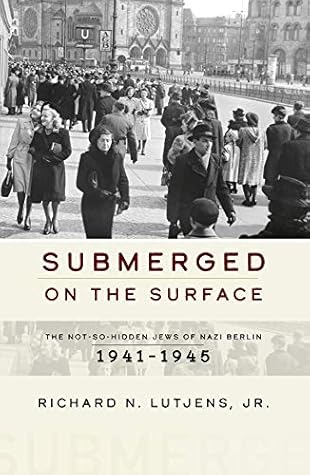More on this book
Kindle Notes & Highlights
Started reading
February 24, 2023
Charlotte Bamberg was one of approximately 6,500 Berlin Jews who, between 1941 and 1945, attempted to escape the Nazis by going into what is usually referred to as “hiding,” and she was one of some 1,700 of them who managed to survive in this manner.
Many, however, went by the terms U-Boot (submarine or U-boat) or Taucher (diver), and, very true to the city’s reputation for wry humor, they referred to the act of hiding as “diving” or “submerging.”
First, as already evidenced by the language of survivors such as Bamberg, Jews in Berlin did not hide in the way that the word implies
Charlotte Bamberg’s unpublished testimony is “Untergetaucht—An der Oberfläche—1941/1945” (“Submerged—On the Surface—1941/1945”), which serves as the inspiration for this book’s title and suggests a surprisingly public illegal existence.
If anything, Jews who attempted to evade arrest and deportation in and around Berlin during the final years of the Third Reich focused more on concealing their Jewish identity than on physical concealment.
Second, surviving submerged in the city was both an individual and individualistic act, and it is remembered by survivors as such, both implicitly and explicitly.
Proceeding from these two arguments is this book’s third argument and the overall basis for its structure: most unusually, especially when working with Holocaust survivor testimony, Berlin’s divers have no collective memory.
The dynamic and individual nature of hiding resulted in a staggering number of variables dictating not only how Berlin’s dashers and divers survived but also how they experienced that survival.


